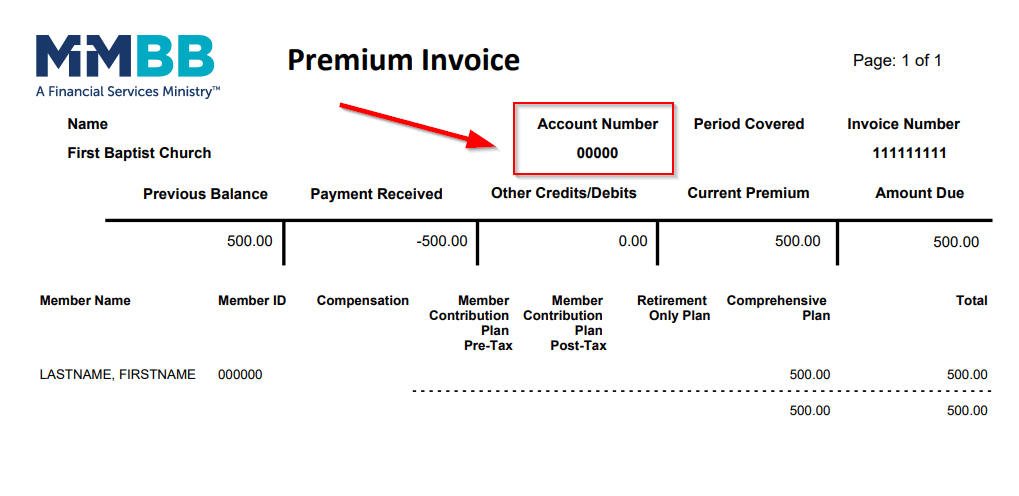The Markets (as of market close May 31, 2024)
Stocks rebounded from a sour April, closing higher in May. Investors spent the month focused on job gains, gross domestic product, corporate earnings reports, and inflation data in an attempt to determine when the Federal Reserve might cut interest rates. Each of the benchmark indexes listed here reversed the prior month's losses with notable gains in May. The tech-heavy Nasdaq led the way, followed by the Russell 2000, the S&P 500, the Global Dow, and the Dow. Consumer confidence (see below) exceeded expectations in May, outpacing April's reading. The labor market showed signs of slowing (see below), while wages inched lower since April 2023.
Inflationary data showed price pressures stabilized in April, with the Consumer Price Index and the Personal Consumption Expenditures Price Index each rising 0.3%. The CPI rose 3.4% for the 12 months ended in April (3.5% for the year ended in March), while the PCE price index was unchanged at 2.7% for the year ended in April. Growth slowed for the U.S. economy, as measured by gross domestic product, which increased 1.3% in the first quarter, following a 3.4% increase in the fourth quarter (see below). This is the weakest rate of growth since the second quarter of 2022. Consumer spending slowed more than expected, coming in at 2.0% in the first quarter compared to 3.3% in the fourth quarter. Spending on services rose 3.9% in the first quarter, following a 3.4% increase in the previous period. Spending on goods dipped 1.9%.
Job growth slowed notably in April (see below). In addition, a slight downward revision to the February estimate and an upward revision to January resulted in employment for those two months being 22,000 lower than previously reported. Wage growth slowed on an annual basis, increasing 3.9% over the last 12 months, down from 4.1% for the 12 months ended in March. New weekly unemployment claims decreased from a year ago, while total claims paid increased (see below).
Corporate profits declined for the first time in a year, falling 0.6%. Nevertheless, about halfway through first-quarter corporate earnings season, S&P 500 companies generally outperformed expectations. About 46% of the S&P 500 companies reported actual earnings, of which 77% have reported earnings per share above estimates. Several sectors have reported favorable earnings results, including communication services, financials, industrials, and information technology. Health care has lagged.
The housing market continued to be influenced by high mortgage rates. Sales of both existing homes and new homes declined in April. Selling prices for existing homes continued to climb, while prices for new homes declined.
Industrial production was flat in April, while manufacturing output declined (see below). According to the latest survey from the S&P Global US Manufacturing Purchasing Managers' Index™, the manufacturing sector saw its first decline of the year in April. The services sector saw business accelerate but at slower pace than in March as new orders declined for the first time since October.
Among the market sectors in April, information technology, utilities, communication services, and real estate outperformed, while energy lagged.
Bond yields gained as bond prices declined in April. Ten-year Treasury yields generally closed the month higher. The two-year Treasury yield rose nearly 35.0 basis points to about 5.05% on the last day of April. The dollar surged against a basket of world currencies. Gold prices climbed higher. Crude oil prices dipped lower. The retail price of regular gasoline was $3.577 per gallon on May 27, $0.076 below the price a month earlier but $0.006 higher than the price a year ago.
MARKET SUMMARY
| MARKET/INDEX |
2023 CLOSE |
PRIOR MONTH |
AS OF 5/31 |
MONTHLY CHANGE |
YTD CHANGE |
| DJIA |
37,689.54 |
37,815.92 |
38,686.32 |
2.30% |
2.64% |
| NASDAQ |
15,011.35 |
15,657.82 |
16,735.02 |
6.88% |
11.48% |
| S&P 500 |
4,769.83 |
5,035.69 |
5,277.51 |
4.80% |
10.64% |
| RUSSELL 2000 |
2,027.07 |
1,973.91 |
2,070.13 |
4.87% |
2.12% |
| GLOBAL DOW |
4,355.28 |
4,552.50 |
4,712.83 |
3.52% |
8.12% |
| FED. FUNDS |
5.25%-5.50% |
5.25%-5.50% |
5.25%-5.50% |
0 bps |
0 bps |
| 10-YEAR TREASURIES |
3.86%s |
4.68% |
4.51% |
-17 bps |
65 bps |
| US DOLLAR-DXY |
101.39 |
106.30 |
104.61 |
1.59% |
3.18% |
| CRUDE OIL-CL=F |
$71.30 |
$81.58 |
$77.23 |
-5.33% |
8.32% |
| GOLD-GC=F |
$2,072.50 |
$2,302.10 |
$2,348.50 |
2.02% |
13.32% |
Chart reflects price changes, not total return. Because it does not include dividends or splits, it should not be used to benchmark performance of specific investments.
Latest Economic Reports
- Employment: Total employment increased by 175,000 in April, following an upwardly revised March total of 315,000 new jobs. The April jobs increase was well below the average monthly gain of 242,000 over the prior 12 months. Employment trended up in health care, social assistance, and transportation and warehousing. In April, the unemployment rate increased 0.1 percentage point to 3.9% and was 0.5 percentage point higher than the rate a year earlier. The number of unemployed persons was relatively unchanged at 6.5 million. In April, the number of long-term unemployed (those jobless for 27 weeks or more), at 1.2 million, accounted for 19.6% of all unemployed people. The labor force participation rate, at 62.7%, was unchanged from the prior month, while the employment-population ratio, at 60.2%, decreased 0.1 percentage point from March. In April, average hourly earnings increased by $0.07 to $34.75. Since April 2023, average hourly earnings rose by 3.9%, which is down from the March figure of 4.1%. The average workweek edged down by 0.1 hour to 34.3 hours in April.
- There were 219,000 initial claims for unemployment insurance for the week ended May 25, 2024. During the same period, the total number of workers receiving unemployment insurance was 1,791,000. A year ago, there were 231,000 initial claims, while the total number of workers receiving unemployment insurance was 1,729,000.
- FOMC/interest rates: The Federal Open Market Committee met at the beginning of the month, the result of which was that interest rates remained unchanged. The Committee noted that there had been a lack of progress toward reaching its inflation goal of 2.0%. Overall, the FOMC maintained its hawkish stance toward lowering interest rates, with no date set for a reduction in the offing.
- GDP/budget: The economy, as measured by gross domestic product, accelerated at an annualized rate of 1.3% in the first quarter of 2024, according to the second estimate from the Bureau of Economic Analysis. GDP increased 3.4% in the fourth quarter. Personal consumption expenditures rose 2.0% in the first quarter compared to a 3.3% increase in the previous quarter. Consumer spending on goods dipped 1.9%, while spending on services rose 3.9%. Gross domestic investment rose 3.2% in the first quarter, well above the 0.7% increase in the fourth quarter. Nonresidential fixed investment advanced 3.3% in the first quarter (3.7% in the fourth quarter), while residential fixed investment increased 15.4% in the first quarter compared to a 2.8% increase in the fourth quarter. Exports inched up 1.2%, while imports, which are a negative in the calculation of GDP, increased 7.7%. Consumer prices increased 3.3% in the first quarter, compared with an increase of 1.8% in the previous quarter. Excluding food and energy prices, the PCE price index increased 3.6%, compared with an increase of 2.0% in the fourth quarter.
- April saw the federal budget enjoy a surplus of $236.0 billion, well below the $210.0 billion from a year earlier. This is up from the April 2023 surplus of $176.0 billion. Government receipts totaled $776.0 billion, of which individual income tax receipts and corporate tax receipts accounted for about $574.0 billion. Through the first seven months of fiscal year 2024, the total deficit sits at $855.0 billion, which is roughly $70.0 billion lower than the deficit through the first seven months of the previous fiscal year. So far in fiscal year 2024, total government receipts were $3.0 trillion ($2.7 trillion in 2023), while government outlays were $3.8 trillion, compared to $3.6 trillion over the same period in the previous fiscal year.
- Inflation/consumer spending: According to the latest Personal Income and Outlays report, personal income rose 0.3% in April (0.5% in March), while disposable personal income increased 0.2%, down from 0.5% in March. Consumer prices climbed 0.3% in April for the third straight month. Consumer prices excluding food and energy (core prices), rose 0.2% in April, 0.1 percentage point lower than the March increase. Consumer prices rose 2.7% since April 2023, unchanged from the advance for 12 months ended in March. Core prices increased 2.8% over the same period, unchanged from the 12 months ended in March. Consumer spending rose 0.2% in April, well below the 0.7% increase in both February and March.
- The Consumer Price Index rose 0.3% in April, 0.1 percentage point lower than the March increase. Over the 12 months ended in April, the CPI rose 3.4%, down 0.1 percentage point from the period ended in March. Excluding food and energy, the CPI rose 0.3% in April, (0.4% in March), and 3.6% from April 2023. Increases in prices for shelter (0.4%) and gasoline (2.8%) accounted for over 70.0% of the overall increase in the CPI. rose in March. Energy prices rose 1.1% over the month. Food prices were unchanged.
- Prices that producers received for goods and services rose 0.5% in April after falling 0.1% (revised) in March. Producer prices increased 2.2% for the 12 months ended in April, up from the 1.8% increase for the 12 months ended in March. Producer prices less foods, energy, and trade services advanced 0.4% in April (0.2% in March), while prices excluding food and energy increased 0.5%. For the 12 months ended in April, prices less foods, energy, and trade services moved up 3.1%., up from 2.8% for the 12 months ended in March. Prices less foods and energy increased 2.4% for the year ended in April, unchanged from the period ended in March.
- Housing: Sales of existing homes fell 1.9% in April and 1.9% over the last 12 months. According to the National Association of Realtors®, existing home sales have stagnated because interest rates have not moved lower. The median existing-home price was $407,600 in April, up from the March price of $392,900 and well above the April 2023 price of $385,800. Unsold inventory of existing homes represented a 3.5-month supply at the current sales pace, up slightly from 3.2 months in March. Sales of existing single-family homes decreased 2.1% in April and 1.3% from the prior year. The median existing single-family home price was $412,100 in April, up from $396,600 in March and up 5.6% from March 2023. According to Freddie Mac, the 30-year fixed-rate mortgage averaged 7.02% as of May 16, down from 7.09% the previous week and up from 6.39% one year ago.
- New single-family home sales also declined in April, falling 4.7% below the March pace and 7.7% under the April 2023 rate. The median sales price of new single-family houses sold in April was $433,500 ($439,500 in March). The April average sales price was $505,700 ($527,400 in March). The inventory of new single-family homes for sale in April represented a supply of 9.1 months at the current sales pace, up from 6.9 months in March.
- Manufacturing: Industrial production was unchanged in April, after inching up 0.1% in March. Manufacturing output decreased 0.3% in April. Mining decreased 0.6% in April, while utilities increased 2.8%. For the 12 months ended in April, total industrial production fell 0.4% from its year-earlier level. For the 12 months ended in April, manufacturing fell 0.5%, mining decreased 1.3%, while utilities increased 2.3%.
- New orders for durable goods rose 0.7% in April following a 0.8% March increase, marking the third consecutive monthly increase. Excluding transportation, new orders increased 0.4% in April. Excluding defense, new orders were flat. New orders for transportation equipment advanced 1.2% in April, contributing to the overall increase in new orders. New orders for nondefense capital goods in April decreased 1.5%, while new orders for defense capital goods increased 15.2%.
- Imports and exports: U.S. import prices advanced 0.9% in April following a 0.6% advance in the previous month. The April increase was the largest one-month jump since March 2022. Import prices last declined in December 2023. Import prices advanced 1.1% over the last 12 months, the largest yearly increase since December 2022. Import fuel prices rose 2.4% in April. Import prices excluding fuel ticked up 0.7% in April. Export prices rose 0.5% in April after advancing 0.1% in March. Export prices have not decreased since December 2023. Higher nonagricultural prices in April more than offset lower agricultural prices. Despite the recent increases, prices for exports declined 1.0% over the past year, the smallest one-year drop since February 2023.
- The international trade in goods deficit was $99.4 billion in April, up $7.1 billion, or 7.7%, from March. Exports of goods were $169.9 billion in April, $0.9 billion, or 0.5%, less than in March. Imports of goods were $269.3 billion in April, $8.0 billion, or 4.4%, under the March estimate. Since April 2023, exports increased 4.2%, while imports increased 3.2%.
- The latest information on international trade in goods and services, released May 2, is for March and revealed that the goods and services trade deficit was $69.4 billion, down $0.1 billion, or 0.1%, from the February deficit. March exports were $257.6 billion, 2.0% less than February exports. March imports were $327.0 billion, 1.6% under February imports. Year over year, the goods and services deficit increased $6.5 billion, or 3.2%, from the same period in 2023. Exports increased $9.1 billion, or 1.2%. Imports increased $15.6 billion, or 1.6%.
- International markets: Eurozone inflation rose for the first time in five months, climbing to 2.6% in May, up from 2.4% in each of the previous two months. Price advances for energy and services helped drive the overall increase. Prices rose more than expected in Germany (2.8%), France (2.7%), Spain (3.8%), and Italy (0.8%). Canada saw its economy expand by 0.4% in the first quarter of 2024, driven higher, in part, by a 0.7% increase in household spending. Since the first quarter of 2023, Canadian GDP expanded 1.7%. China's manufacturing receded in May as new export orders declined. For May, the STOXX Europe 600 Index rose 2.6%; the United Kingdom's FTSE gained 0.8%; Japan's Nikkei 225 Index advanced 0.7%; and China's Shanghai Composite Index fell 0.6%.
- Consumer confidence: Consumer confidence exceeded expectations in May. The Conference Board Consumer Confidence Index® was 102.0 in May, well above a slightly upwardly revised 97.5 in April. The Present Situation Index, based on consumers' assessment of current business and labor market conditions, increased to 143.1 in May, up from 140.6 in the previous month. The Expectations Index, based on consumers' short-term outlook for income, business, and labor market conditions, rose to 74.6 in May from 68.8 in April.
Eye on the Month Ahead
The Federal Open Market Committee meets for the second straight month in June. Job growth in April was notably slower. However, inflation remained elevated. Investors will focus on how the Fed assesses this information in determining its policy stance moving forward.
Data sources: Economic: Based on data from U.S. Bureau of Labor Statistics (unemployment, inflation); U.S. Department of Commerce (GDP, corporate profits, retail sales, housing); S&P/Case-Shiller 20-City Composite Index (home prices); Institute for Supply Management (manufacturing/services). Performance: Based on data reported in WSJ Market Data Center (indexes); U.S. Treasury (Treasury yields); U.S. Energy Information Administration/Bloomberg.com Market Data (oil spot price, WTI, Cushing, OK); http://www.goldprice.org (spot gold/silver); Oanda/FX Street (currency exchange rates). News items are based on reports from multiple commonly available international news sources (i.e. wire services) and are independently verified when necessary with secondary sources such as government agencies, corporate press releases, or trade organizations. All information is based on sources deemed reliable, but no warranty or guarantee is made as to its accuracy or completeness. Neither the information nor any opinion expressed herein constitutes a solicitation for the purchase or sale of any securities, and should not be relied on as financial advice. Past performance is no guarantee of future results. All investing involves risk, including the potential loss of principal, and there can be no guarantee that any investing strategy will be successful.
The Dow Jones Industrial Average (DJIA) is a price-weighted index composed of 30 widely traded blue-chip U.S. common stocks. The S&P 500 is a market-cap weighted index composed of the common stocks of 500 largest, publicly traded companies in leading industries of the U.S. economy. The NASDAQ Composite Index is a market-value weighted index of all common stocks listed on the NASDAQ stock exchange. The Russell 2000 is a market-cap weighted index composed of 2,000 U.S. small-cap common stocks. The Global Dow is an equally weighted index of 150 widely traded blue-chip common stocks worldwide. The U.S. Dollar Index is a geometrically weighted index of the value of the U.S. dollar relative to six foreign currencies. Market indices listed are unmanaged and are not available for direct investment.
IMPORTANT DISCLOSURES
Broadridge Investor Communication Solutions, Inc. does not provide investment, tax, legal, or retirement advice or recommendations. The information presented here is not specific to any individual’s personal circumstances.
To the extent that this material concerns tax matters, it is not intended or written to be used, and cannot be used, by a taxpayer for the purpose of avoiding penalties that may be imposed by law. Each taxpayer should seek independent advice from a tax professional based on his or her individual circumstances.
These materials are provided for general information and educational purposes based upon publicly available information from sources believed to be reliable — we cannot assure the accuracy or completeness of these materials. The information in these materials may change at any time and without notice.








